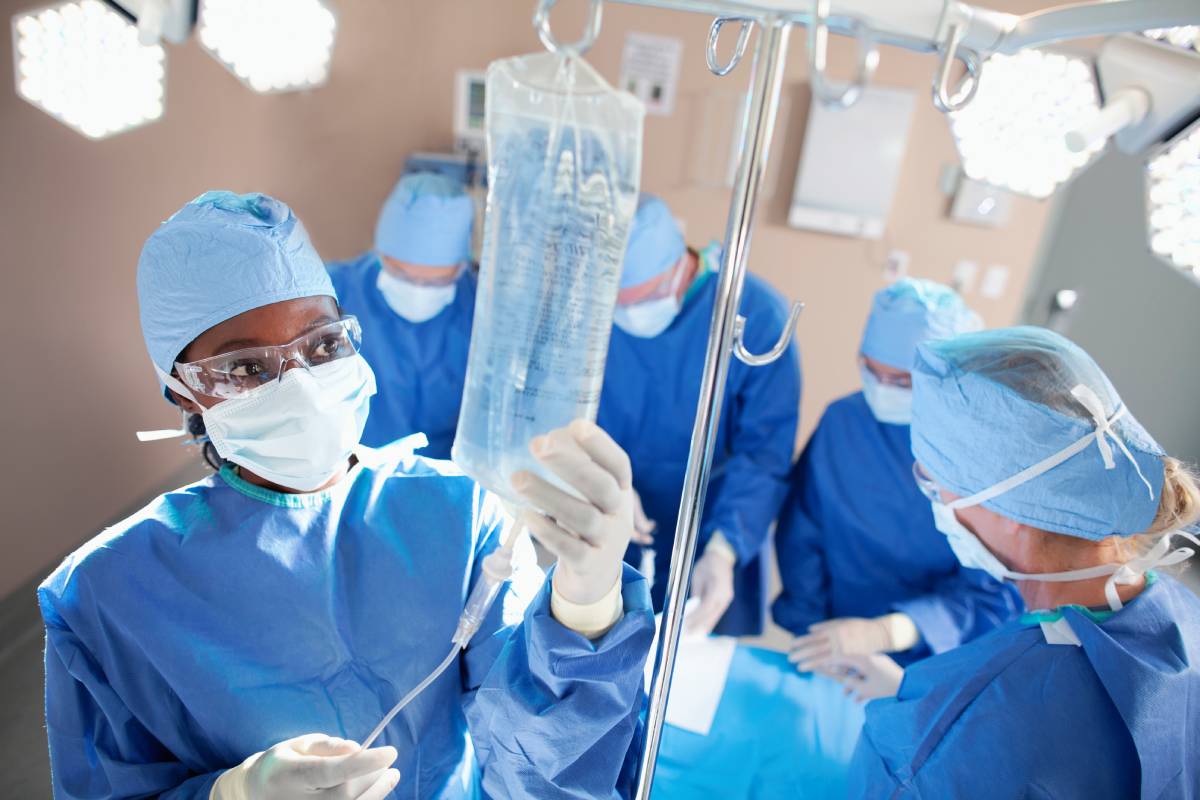Renal transplantation is the most common surgical intervention for end-stage renal disease (ESRD), and the primary course of medical treatment for patients with nephropathy caused by hypertension or diabetes. Since the first successful renal transplant in 1954, the procedure has improved significantly, with one-year survival rates for deceased donor grafts exceeding 90% in many countries.1 Meticulous anesthesia and surgical planning is vital for ensuring the patient’s safety and optimal outcomes following renal transplantation.
Intraoperative monitoring during renal transplantation ensures adequate renal blood flow to the graft and maintains optimal intravascular volume. Simple non-invasive monitoring techniques include non-invasive blood pressure monitoring, pulse oximetry, and electrocardiography. Additional modalities may include capnography, temperature monitoring, and urine monitoring. Potential complications during renal transplantation include severe anemia, hypertension, metabolic acidosis, congestive heart failure, hyperkalemia, hyponatremia, and circulatory collapse.2
A specific consideration for renal transplantation is that patients with ESRD are at increased risk of aspiration during anesthesia. To mitigate this risk, administering an oral non-particulate antacid can increase gastric pH. An intravenous H-2 blocker can decrease gastric acid secretion prior to anesthesia induction, facilitating the overall process. In general, propofol, desflurane, isoflurane, and thiopental are considered safe options for inducing anesthesia in patients undergoing this type of surgery. Etomidate’s cardiovascular stability makes it the preferred anesthetic of choice in patients with comorbid ischemic heart disease (IHD) or impaired ventricular function. On the other hand, ketamine should be avoided in patients with IHD due to the agent’s sympathetic stimulation.3 Although sevoflurane has shown nephrotoxic effects in pre-clinical studies due to the drug’s metabolites (compound A and fluoride ions), these results have not been replicated in clinical trials on renal function. Therefore, sevoflurane may also be used during this procedure, although the recommendation remains that the practicing anesthesiologist be aware of the possible risks.
Fentanyl, alfentanil, sufentanil, and remifentanil may be used if opioids are needed during the perioperative process. However, it is advised that morphine be avoided due to the risk of accumulation of the drug’s metabolite, morphine-6-glucuronide, which may further exacerbate renal failure. Continuous neuromuscular monitoring is suggested for patients with ESRD. Succinylcholine can be used when the patient’s serum potassium levels are below 5 mEq/L, while rocuronium and vecuronium should be used with caution, since these agents may exhibit undesired prolonged durations of action.4 In addition, atracurium and cisatracurium may be suitable options; however, it should be known that atracurium’s metabolite, laudanosine, increases the risk of seizure.3 Sugammadex is safe to use to reverse the effects of rocuronium and vecuronium.5
Renal transplantation is an important intervention for patients with end-stage renal disease (ESRD), offering a potentially improved quality of life and survival rate. The surgical procedure has seen significant advancements since its inception in the 1950s, with improved success rates for both deceased and living donor transplant surgeries. Careful anesthetic management throughout the perioperative process is needed to mitigate the associated risks of the procedure. As the understanding of renal transplantation and anesthesia continues to evolve, the success of current renal transplantation procedures hinges on a collaborative approach between the entire healthcare team, including surgeons, anesthesiologists, nurses, psychiatrists, and of course, the patient.
References
- Karunarathna, I., De Alvis, K., Gunasena, P., and Thushan, J., 2024., “The Role of Anesthesia in Renal Transplantation: A Focus on Patient Safety and Graft Function.” https://www.researchgate.net/publication/383021064_The_Role_of_Anesthesia_in_Renal_Transplantation_A_Focus_on_Patient_Safety_and_Graft_Function
- Lemmens, Harry J. M. “Kidney Transplantation: Recent Developments and Recommendations for Anesthetic Management.” Anesthesiology Clinics of North America, 22(4), 2004, 651–62. https://doi.org/10.1016/j.atc.2004.05.007
- Jaszczuk, Slawomir, et. al. “Anaesthetic Approach to Enhanced Recovery after Surgery for Kidney Transplantation: A Narrative Review.” Journal of Clinical Medicine, 11(12), 2022, 3435., https://doi.org/10.3390/jcm11123435
- Sprung, Juraj, et. al. “Anesthesia for Kidney Transplant Surgery.” Anesthesiology Clinics of North America, 18(4), 2000, 919–51. https://doi.org/10.1016/S0889-8537(05)70202-9
- Chandrasekhar, Kaarthik, et. al. “Sugammadex.” StatPearls, StatPearls Publishing, 2025. http://www.ncbi.nlm.nih.gov/books/NBK470263/


